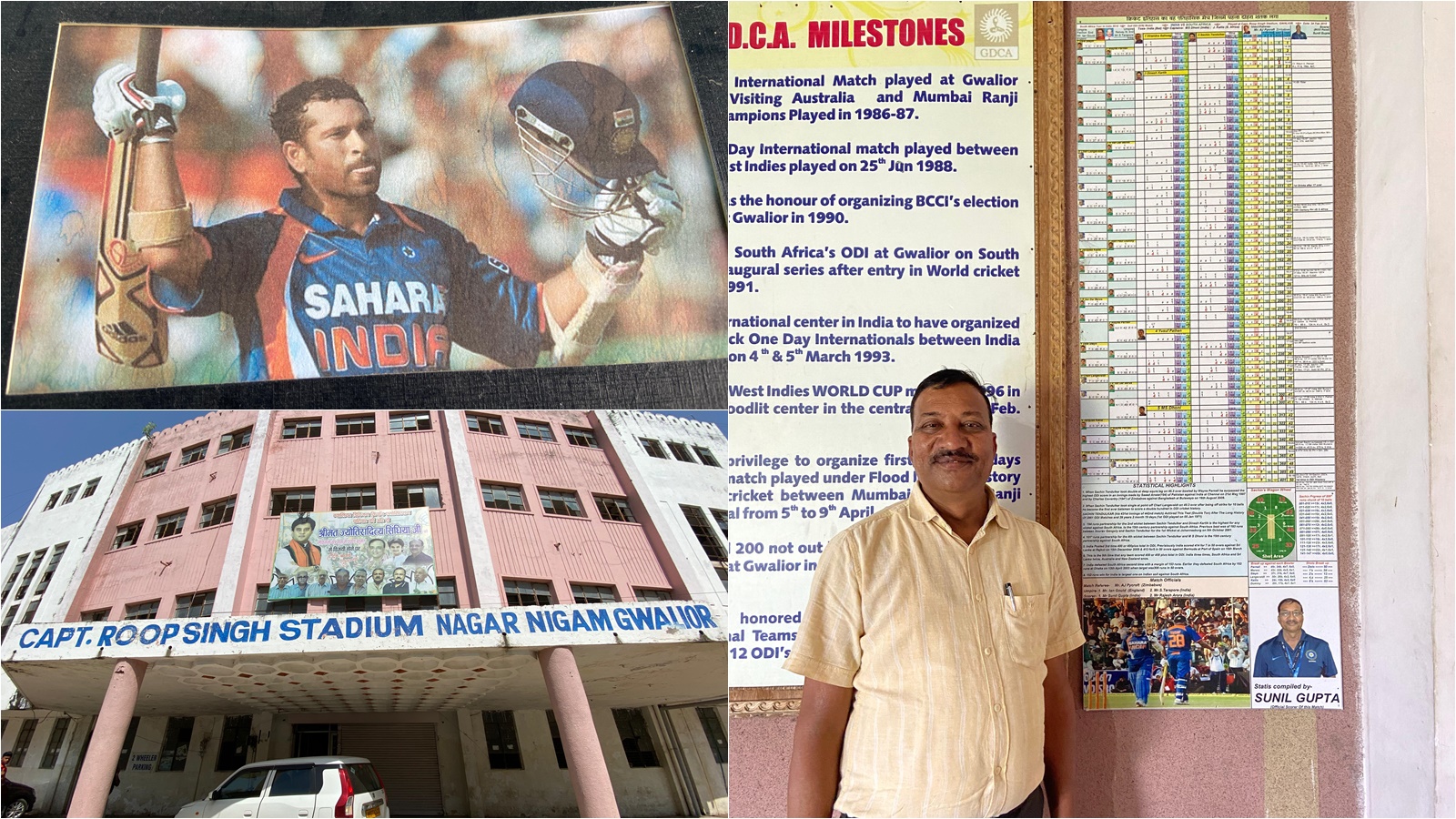Gwalior’s Captain Roop Singh Stadium is named after a hockey legend, the brother of wizard Dhyan Chand, but as far as cricket is concerned, it’s forever linked with batting maestro Sachin Tendulkar.
It was at this venue where Tendulkar scored the first-ever double hundred in ODIs, against South Africa on February 24, 2010, in fact the last international game here. The dilapidated condition of the stadium is evident. The big scoreboards are rusted, the three-legged floodlights have not been used for ages, the pavilions are dusty, the stands are in tatters, and the less said about the heptagon-shaped ground the better. But the venue still takes pride in its significant connection with a legend of the game.
Now, all the activity was at the new Shrimant Madhavrao Scindia Cricket Stadium where India will play Bangladesh in the first of three T20Is on Sunday.
If one searches for ‘Sachin Tendulkar’s 200 in ODIs’ on YouTube, one would hear Ravi Shastri’s booming voice: “First man on the planet to reach 200. And it’s the superman from India, Sachin Tendulkar. Take a bow, Master.”
“Aap yahan aaye ho toh yahan ki mitti le jao, cricket ke bhagwan ne yahaan ithihaas likha tha (If you are here, please take the soil of this pitch with you. It was here that cricket’s god had scripted history),” Madhya Pradesh Cricket Association (MPCA) scorer Sunil Gupta tells The Indian Express.
The 52-year-old flaunts the scoresheet, which is framed at the reception area of the stadium. “Sachin was on 186 in the 43rd over, when he suddenly slowed down and MS Dhoni started hitting big shots. In the 49th over, Dhoni faced all six deliveries and took a single of the last over,” laughs Gupta.
“I was literally shouting ‘yaar, ek run bana lene do (Please let him score one run). That was the only time I was biased. First ball of the last over, Dhoni hit a six and the fans were not even cheering from the stands. Off the second ball, when he took a single, the stadium erupted. Then on the third ball of the 50th over, Sachin reached that milestone. There were tears in our eyes, probably the last time I cried.”
That was the last time Gwalior hosted an international match. Last year’s Irani Trophy was played at the Captain Roop Singh Stadium.

“Cricket waapis aa raha is shehar mein, apna vanvaas pura karne ke baad (Cricket is returning to this city after an exile),” says the emotional scorer.
Personal journey
Gupta became a scorer after the late Scindia saw him drawing a wagon wheel with a pen on his notebook.
“Madhavrao Scindia was a cricket tragic,” he continues.
“In the winter of 1987, I had bunked school and was just writing all the scores. And with that, I was also drawing the wagon wheel. I was just sitting here (the Pavilion End), and Maharaj (Scindia) after getting out saw my drawings, pulled a chair and asked me what I was doing. I told him the exact number of runs he had scored in which area and showed him the drawing. He told me you will be an excellent scorer and now I have covered 72 international matches,” says Gupta.
He recalls two other interesting incidents from this venue. One was from the India-West Indies game at the 1996 World Cup, and the other from an ODI in 1988 played between the same teams.
“In 1996, it was Sachin vs Lara. There was a hype about that match. Lara got out cheaply, Sachin scored a fifty (70) and India won the match. Floodlights were installed in the stadium and 30,000 packets of food were ordered from Delhi’s Nathu Sweets by Scindia distributed free among the fans during the innings break.”

The pitch at the Roop Singh Stadium has always supported batters but Gupta cannot forget a fearsome spell from Patrick Patterson in 1988, when he ran through the Indian top order.
“I was working as a volunteer at the manual scoreboard. I have never seen anyone bowling so fast. Patterson removed (Kris) Srikkanth, Arun Lal and Mohinder Amarnath in quick succession. He was bowling rockets. I have never seen anything like that in my life. It was scary,” Gupta remembers.
Captain Roop Singh Stadium still hosts domestic matches but with the 25-year-old lease of the match set to expire next year, the crumbling structure of the stadia suggests it will become just another place with nostalgic value.
“No one can take away Sachin’s double hundred from this ground,” says Gupta, while displaying a photograph with the legend on his mobile.
I’m Manas Ranjan Sahoo: Founder of “Webtirety Software”. I’m a Full-time Software Professional and an aspiring entrepreneur, dedicated to growing this platform as large as possible. I love to Write Blogs on Software, Mobile applications, Web Technology, eCommerce, SEO, and about My experience with Life.






